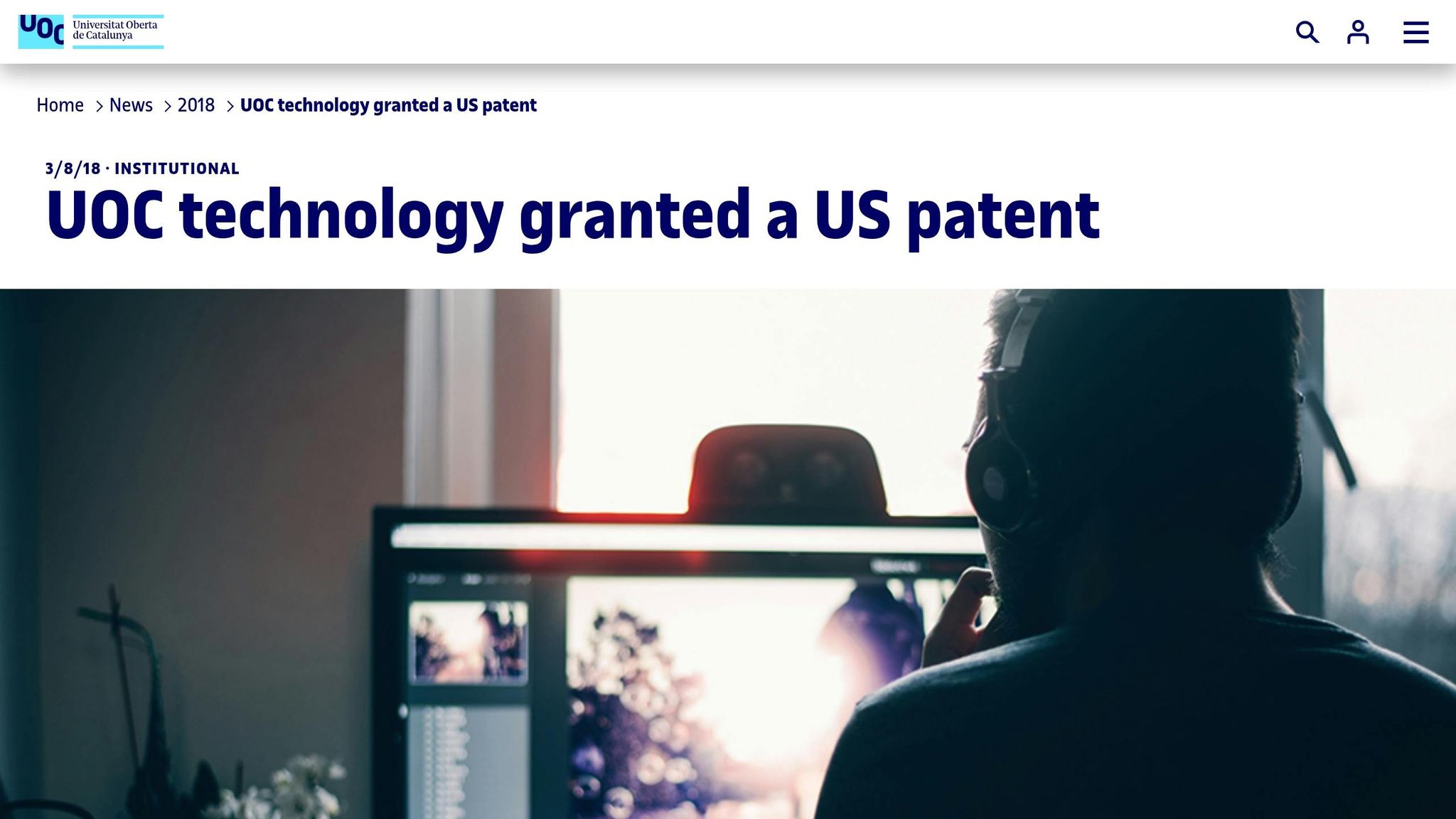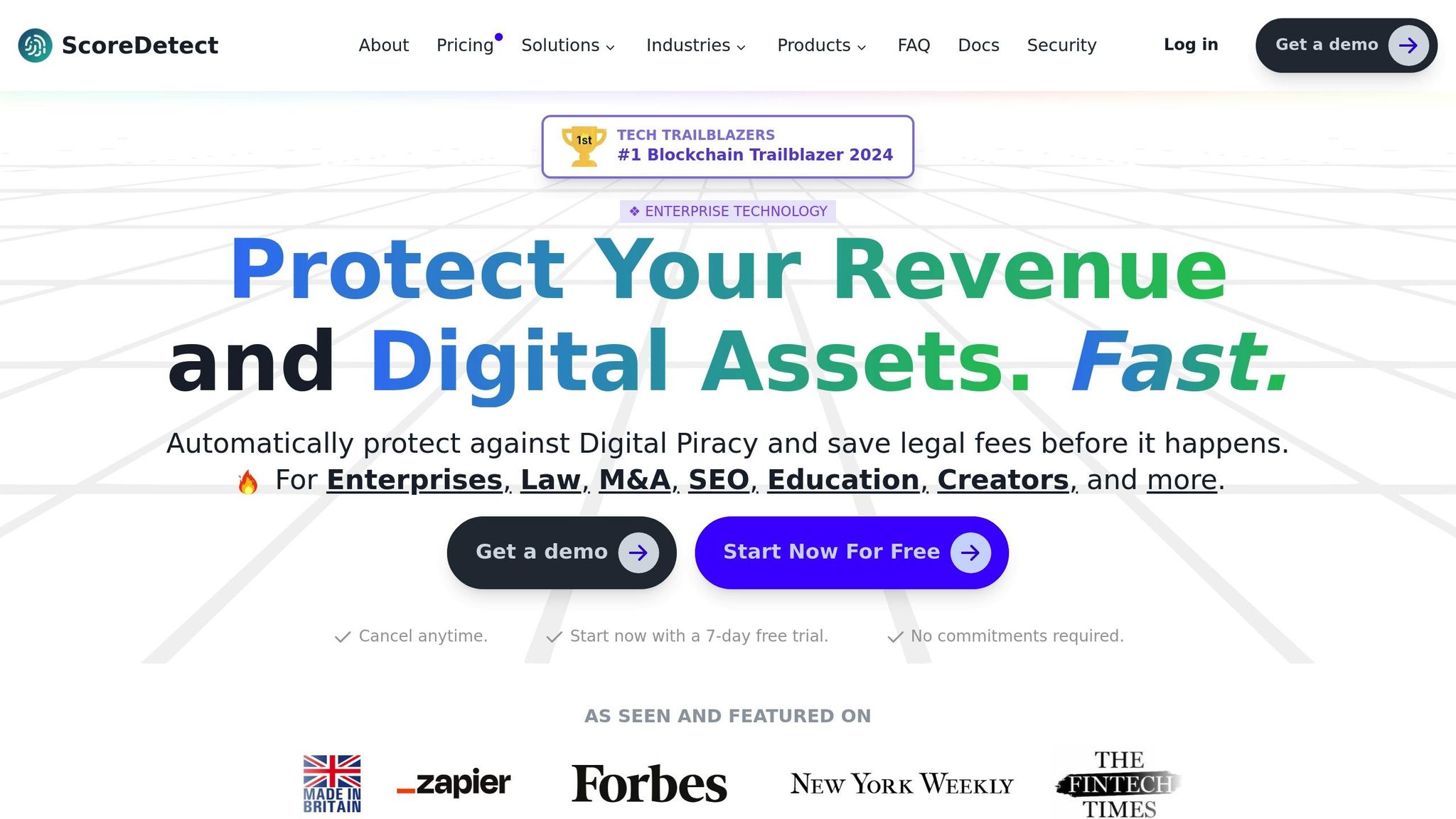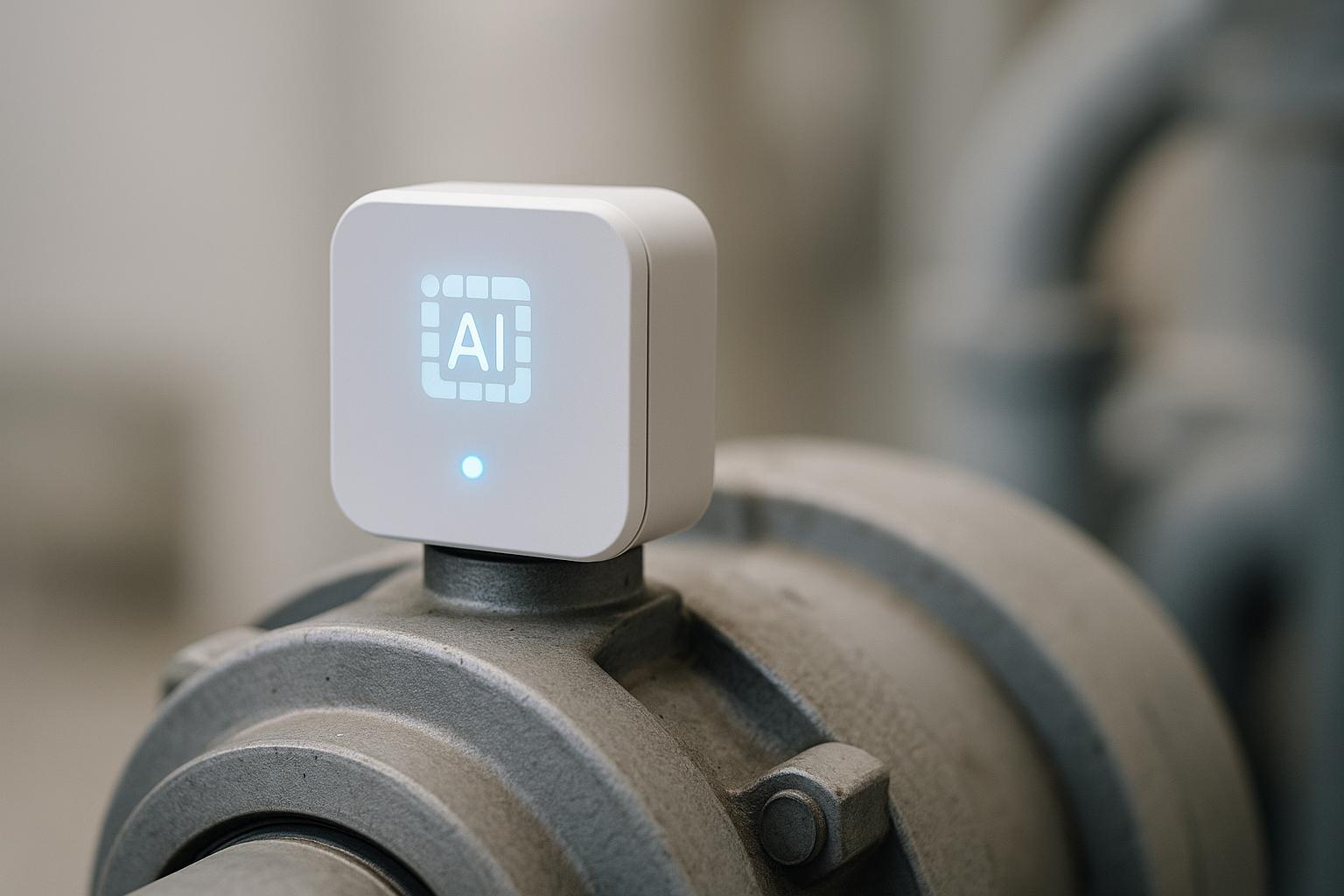Collusion attacks are a major threat to audio watermarking, a tool used to protect digital content from piracy. These attacks combine multiple watermarked copies of the same audio to weaken or remove the embedded watermark without affecting sound quality. This compromises intellectual property protection, making it harder to trace content leaks or enforce copyright.
Key points:
- What is audio watermarking? Embedding hidden identifiers in audio to detect tampering or piracy.
- How do collusion attacks work? Techniques like averaging, linear combinations, or block replacement are used to cancel out watermarks.
- Why does it matter? These attacks bypass security, exposing content to piracy and financial loss.
- Defense strategies: Use individualized watermarks, AI-powered tampering detection, and blockchain verification.
To counter these risks, tools like ScoreDetect offer advanced protection methods, ensuring content security and compliance with copyright laws.
UOC‘s Audio Watermarking System, High-fidelity recovery under extreme conditions

Methods Used in Collusion Attacks
To understand how attackers compromise audio watermarks, it’s essential to look at the specific techniques they use during collusion attacks. These methods exploit the mathematical properties of watermarks while ensuring the audio remains high-quality and avoids detection. Here’s a closer look at the most common approaches and the goals driving them.
Common Attack Techniques
Averaging attacks are one of the simplest methods. Attackers collect multiple watermarked versions of the same audio and calculate the average of corresponding samples across these copies. This process often cancels out the watermark signals while retaining the original audio. The more versions attackers have, the more effective this technique becomes, potentially removing the watermark entirely.
Linear combination attacks build on the concept of averaging but add more precision. Instead of straightforward averaging, attackers assign specific weights to each audio copy, depending on factors like watermark strength or audio quality. This weighted approach allows for more control, making it particularly effective against watermarks that vary in embedding intensity.
Nonlinear collusion methods involve operations that go beyond simple averaging. For example, median filtering selects the median value from corresponding samples across multiple copies, while min-max attacks choose either the minimum or maximum values. These techniques are especially harmful to watermarks that rely on statistical consistency, as they disrupt the expected patterns.
Block replacement attacks involve dividing the audio into segments and replacing certain blocks with corresponding sections from other watermarked copies. This highly targeted method focuses on areas with strong watermark signals, leaving the rest of the audio intact to maintain quality.
Temporal desynchronization introduces slight timing shifts in the watermarked copies before combining them. By adding small delays or advances, attackers can disrupt watermarks that rely on precise timing, making them harder to detect – even if the watermark isn’t entirely removed.
These techniques are designed with clear goals in mind, which highlight why they are so effective and challenging to counter.
Attack Objectives
The methods used in collusion attacks are driven by specific goals that make them particularly dangerous:
- Removing watermarks without quality loss is the top priority. Attackers aim to eliminate watermarks while keeping the audio quality intact to ensure it remains commercially viable and avoids detection. Any noticeable distortion in the audio would immediately raise suspicion.
- Scalability is another critical factor. Large-scale piracy operations require methods that can be automated and applied efficiently across vast amounts of content. Techniques like averaging attacks are preferred because they can handle high volumes without manual intervention.
- Key extraction represents a more advanced objective. By successfully removing watermarks from multiple audio files, attackers may reverse-engineer the embedding algorithms or keys used in the watermarking system. This knowledge allows them to bypass protections for future content without needing multiple copies of each new release.
What makes these attacks particularly challenging to counter is their mathematical precision. Unlike basic audio editing, which might introduce obvious artifacts, a well-executed collusion attack can produce audio that sounds identical to the original while completely undermining the watermark’s security.
Effects of Collusion Attacks on Watermarks and Audio Quality
Collusion attacks take advantage of repetitive watermark patterns to strip away the embedded signal by analyzing multiple watermarked versions of the same audio. By using mathematical methods – most notably averaging – attackers can estimate and cancel out the watermark while leaving the original audio largely intact. This approach not only weakens the watermark but also opens the door for more precise removal techniques.
Effects on Watermark Strength
Collusion methods directly undermine the integrity of watermarks. By averaging multiple copies of watermarked audio, attackers can reduce the visibility of the watermark signal. This technique is particularly effective when the watermark is not intricately tied to the original audio content. Many systems attempt to enhance robustness by embedding the same watermark pattern across different segments of the audio. Unfortunately, this redundancy can be exploited. Attackers can average corresponding segments across multiple copies, identify the watermark pattern, and then subtract it from the audio, rendering the watermark ineffective.
The SDMI challenge highlighted this vulnerability. In that case, Boeuf and Stern analyzed watermarked audio and its original counterpart, identifying redundant watermark elements spread across various chunks of the audio. By estimating the watermark pattern, they successfully removed it, effectively bypassing the protection mechanism [1].
Impact on Audio Quality
Even as watermarks are removed, the audio quality typically remains unaffected. Collusion attacks are designed to strip away watermarks while keeping the audio intact. Since watermarks are embedded at low levels, attackers can eliminate these components without causing noticeable damage to the sound. This careful approach ensures that the audio remains suitable for commercial use, as any audible degradation could hint at tampering and reduce its viability.
sbb-itb-738ac1e
Defense Strategies Against Collusion Attacks
Protecting against collusion attacks requires going beyond standard watermarking techniques. The focus should be on creating watermarks that are both resilient and discreet, striking a balance between robust protection and maintaining the audio’s quality.
Strengthening Watermark Protection
To address the vulnerabilities of traditional watermarking, new methods are being developed to neutralize common attack strategies.
- Individualized watermarking embeds unique watermarks into each copy of the audio. This makes it much harder for attackers to use averaging techniques, as combining multiple copies with different watermarks won’t cancel them out.
- Content-adaptive watermarking integrates the watermark into the audio’s natural characteristics, making it an inseparable part of the content. Removing these watermarks without damaging the audio becomes nearly impossible.
- Redundancy distribution spreads watermark data across random segments of the audio using pseudo-random patterns. This scattering makes it challenging for attackers to locate and isolate the watermark components through statistical methods.
- Some systems even create watermarks that become more pronounced when averaged, turning collusion attempts into clear evidence of tampering.
Advanced Detection Methods
AI-powered tools have transformed how collusion attacks are detected and countered. For example, ScoreDetect uses advanced algorithms to identify tampering, even when the audio quality remains seemingly intact.
Machine learning models trained on extensive datasets of watermarked and altered audio can detect the subtle statistical signatures left by collusion attempts. These forensic watermarking techniques go beyond simply confirming the presence of a watermark – they analyze the audio’s deeper characteristics to expose tampering and verify authenticity.
Blockchain-based verification adds another layer of security. By creating immutable records of original content, systems like ScoreDetect can capture checksums of protected audio. This provides indisputable proof of ownership and authenticity without storing the actual files. The blockchain also creates a permanent audit trail, making it easier to identify when and where collusion attacks occurred.
Real-time scanning tools enhance protection by actively searching for unauthorized copies online. ScoreDetect’s web scraping capabilities allow for comprehensive monitoring, ensuring quick detection of compromised content.
Balancing Audio Quality and Protection
One of the biggest challenges in watermarking is maintaining audio quality while ensuring robust protection. Adaptive embedding techniques adjust the watermark’s strength based on the audio’s characteristics, using perceptual masking to keep the watermark undetectable to listeners. These techniques work across time, frequency, and phase domains, ensuring the watermark is both resilient and unobtrusive.
Multi-domain watermarking spreads the watermark across various aspects of the audio signal, such as its temporal, spectral, and spatial properties. This approach ensures that even if attackers manage to remove the watermark from one domain, traces will remain in others. Removing all components without severely degrading the audio becomes nearly impossible.
Industry Applications and Solutions
Audio watermarking plays a crucial role in protecting intellectual property across various industries, but its effectiveness can be significantly compromised by collusion attacks.
Why Audio Watermarking Matters Across Industries
In media and entertainment, audio watermarks are essential for tracking unauthorized content distribution. Record labels, streaming platforms, and content distributors depend on these watermarks to trace piracy back to specific customers or channels. When collusion attacks successfully remove these watermarks, it becomes nearly impossible to pinpoint the source of unauthorized sharing, weakening copyright enforcement efforts.
Legal professionals also rely on audio watermarking to confirm the authenticity of recordings used in court. However, if collusion attacks compromise these watermarks, the credibility of audio evidence can be questioned, complicating legal cases and potentially jeopardizing justice.
In academia and education, watermarked audio is widely used for research, online learning, and digital libraries. Collusion attacks that strip away these protective marks can result in financial losses and compliance issues for institutions, further highlighting the importance of effective watermarking.
The cybersecurity sector views collusion attacks as a major threat. Security experts stress the need for advanced watermarking technologies to safeguard digital assets, as these vulnerabilities expose organizations to significant risks.
How ScoreDetect Tackles Collusion Attacks

ScoreDetect offers a multi-layered approach to counter collusion attacks, ensuring robust protection for audio content. Its invisible watermarking technology embeds content-specific marks that blend seamlessly with the audio’s natural structure, making them incredibly hard to detect or remove through conventional collusion techniques.
The platform leverages advanced AI to detect tampering attempts, even when the altered audio seems untouched to the human ear. Additionally, blockchain verification records the original content’s checksums on an immutable ledger, enabling early detection of any unauthorized modifications.
ScoreDetect also features powerful web scraping capabilities with a 95% success rate, allowing it to monitor unauthorized content distribution across the web. Combined with automated takedown notices that achieve a 96% success rate, this system provides comprehensive protection from detection to enforcement.
For organizations requiring enterprise-level security, ScoreDetect offers round-the-clock content monitoring, supported by dedicated success managers. It also integrates seamlessly with over 6,000 web applications via Zapier, ensuring rapid deployment of protective measures whenever threats are identified.
Supporting Compliance and Copyright Protection
Strong watermark defenses are not just about security – they’re also essential for meeting legal standards. U.S. businesses, for example, must comply with copyright regulations like the Digital Millennium Copyright Act (DMCA), which mandates robust safeguards against infringement. When collusion attacks strip away audio watermarks, organizations risk falling short of these requirements, exposing themselves to potential legal liabilities.
ScoreDetect addresses this challenge by providing verifiable certificates that document content ownership. These certificates include SHA256 hashes, blockchain URLs, and official signatures, which can be used in legal proceedings to prove ownership and authenticity.
Industries such as finance, healthcare, government, and research benefit from ScoreDetect’s compliance-focused features. These include blockchain timestamping and a WordPress plugin that automatically secures newly published content while also improving SEO.
For businesses operating internationally, ScoreDetect’s global monitoring capabilities ensure consistent protection and adherence to copyright laws across different jurisdictions. This makes it an all-encompassing solution for tackling the challenges posed by collusion attacks while maintaining compliance on a global scale.
Conclusion
Key Points
Collusion attacks are among the most advanced threats to audio watermarking systems. By combining multiple watermarked copies, attackers can effectively cancel out the protective marks, leaving content vulnerable to piracy.
The consequences of these attacks go well beyond copyright violations. Media companies lose the ability to trace leaked content back to its source, complicating efforts to hold offenders accountable. Legal professionals may struggle to verify the authenticity of audio evidence, jeopardizing legal proceedings. Meanwhile, research organizations and academic institutions face potential compliance issues when their safeguarded content is compromised. In today’s digital landscape, robust watermarking is critical for protecting content.
Understanding how collusion attacks work highlights the limitations of traditional watermarking methods. Attackers often rely on techniques like averaging, median filtering, and noise analysis to remove watermarks, exploiting statistical variations in the content.
Defending against these threats requires more than basic watermarking. AI detection systems can spot tampering attempts, even when changes aren’t obvious. Blockchain verification adds another layer of security by creating unchangeable records of original content, enabling early detection of unauthorized modifications.
ScoreDetect takes a proactive stance against collusion attacks with its invisible, individualized watermarking technology and real-time monitoring. By leveraging AI and blockchain, it ensures content remains secure and enables swift action to mitigate potential damage. These tools provide a strong foundation for organizations looking to bolster their defenses.
Next Steps
To counteract collusion attacks, organizations need a forward-thinking strategy. Start by reviewing your current protection measures and identifying vulnerabilities. Pinpoint where your content is most at risk and which distribution channels could be exploited.
Consider integrating ScoreDetect’s advanced watermarking technology into your workflow. This solution strengthens your defenses without disrupting existing operations, making it a practical choice for businesses of all sizes.
For industries like finance, healthcare, or government, where compliance is non-negotiable, blockchain-based proof of ownership is a vital tool. ScoreDetect’s automated documentation features can help meet copyright requirements while laying the groundwork for enforcement if needed.
You can begin with ScoreDetect’s free protection options to secure your content immediately. As your needs evolve, explore its advanced features to enhance your defenses further. The platform not only safeguards new content but also contributes to better SEO performance, providing added value to creators and publishers.
Take action today – strengthening your audio watermarking defenses now can prevent unauthorized distribution from harming your brand, reputation, and bottom line.
FAQs
What makes collusion attacks a threat to audio watermarks, and how can they be addressed?
Collusion attacks present a serious hurdle for audio watermarking. These attacks work by combining multiple watermarked copies in an attempt to weaken or completely strip the watermark, making it significantly harder to detect unauthorized usage. The challenge arises because many traditional watermarking techniques rely on simpler encoding methods that often fall short when faced with such coordinated efforts.
To tackle this issue, more advanced strategies can be employed. For instance, embedding unique identifiers – a technique known as active fingerprinting – can help track down the source of illegal sharing. Another effective approach is incorporating collusion-resistant codes into watermarking systems. These codes are specifically designed to withstand attempts at manipulation or removal, offering a more robust line of defense. Together, these methods strengthen the security of audio watermarking systems, providing a reliable way to protect digital assets.
How does blockchain technology help protect audio content from collusion attacks?
Blockchain technology enhances the security of audio content by establishing a tamper-resistant record of ownership and distribution. This decentralized system allows for easier detection and tracking of any attempts to alter or manipulate the content.
By generating a distinct digital fingerprint for the audio, blockchain ensures that unauthorized changes or attempts at tampering can be identified. This adds an extra layer of protection against piracy and improper use.
How does individualized watermarking make it harder for attackers to perform collusion attacks?
Individualized watermarking assigns a distinct watermark to every copy of the content, making it much more challenging for attackers to carry out collusion attacks. In such attacks, multiple copies are combined to detect and strip away the watermark. However, with individualized watermarks, each copy includes unique markers, making this process significantly more complex.
This method not only complicates potential attacks but also strengthens detection efforts. Any tampering or unauthorized use can be traced directly to a specific source, acting as a strong safeguard against piracy and illegal content distribution.

